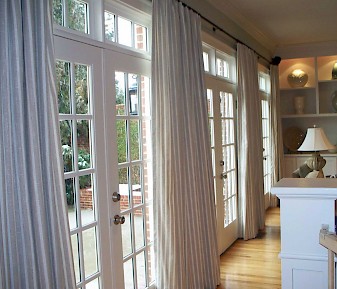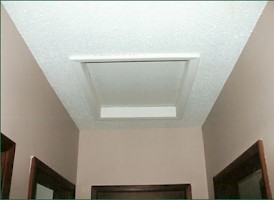Beating the Heat In Your Home
Our first home in Surrey had a great big picture window facing south. In the winter it was great, because if it was a little sunny outside, and you opened the draperies, the room would heat up naturally. The passive solar heating that ensued was welcome
It was a different story in the summer. The heat that would build up in the house due to the large south facing windows made a house that was hot enough to melt candles. Literally! We had gone away from the weekend, and all the plants were dried up and the candles were all melted!
 Fast forward, and I am a Home Inspector in Surrey. We do have our rainy days, but those blistering summer weeks can make it hard to sleep at night and relax during the day. One of my favorite home inspection topics is indoor air quality. Our current home has a big air cleaner and heat pump, but our summer cabin has exactly the same situation as our first home and we deal with the heat every summer.
Fast forward, and I am a Home Inspector in Surrey. We do have our rainy days, but those blistering summer weeks can make it hard to sleep at night and relax during the day. One of my favorite home inspection topics is indoor air quality. Our current home has a big air cleaner and heat pump, but our summer cabin has exactly the same situation as our first home and we deal with the heat every summer.
What can we do to reduce that blistering stale heat that comes in summer without buying an air conditioner? Try these tips.
Open Up In The Morning
The outside temperature is probably best in the early morning (the earlier the better). Open all your windows and doors for some cross-ventilation and letting in that cooler air. As long as you can do this, bringing the temperature down, the better the results.
Close Up In The Sun
When the temperature outside starts to rise a bit though, close all the windows, and close all the south-facing draperies and windows. It's a good idea to have heavier draperies or thicker blinds on the south-facing windows, which will repel the heat better. A lighter-colored drape will also repel the heat better than darker-draperies.
Open The Hatch
Here's a simple one that can lower the temperature in your house quickly and dramatically. Heat rises and pools in ceilings, eventually filling your living space with unlivable heat.  Meanwhile in your basement, a cooler environment exists. If you open your attic hatch, it provides an exit for the heat to continue to rise. And nature abhors a vacuum, so the cooler air moves upward to take that space. Voila, a cooler space.
Meanwhile in your basement, a cooler environment exists. If you open your attic hatch, it provides an exit for the heat to continue to rise. And nature abhors a vacuum, so the cooler air moves upward to take that space. Voila, a cooler space.
I also am a "fan" of the rooftop ventilation. A Whirlybird can be effective when used correctly and properly installed. It removes the excess heat from the attic space, which will allow the living space air to move up into the attic, which allows the basement cooler space to move up, etc. etc. Hence a well ventilated and cooler space.
Don't Make Heat!
Appliances and lighting generate heat when in use. To keep your home cooler, turn off any unnecessary lighting, and swap out heat-producing incandescent light bulbs for cooler compact fluorescent light bulbs. Try to use appliances during the coolest part of the day. Instead of using the stove or oven for food preparation, enjoy a salad or a sandwich, use the outside grill or prepare meals in your slow cooker.
Fan It!
Make good use of all types of fans: ceiling fans, box fans, attic fans. Adjust your ceiling fans' blades so that the leading edge is higher, which will circulate cool air. When the temperature drops at night, open the windows and place fans on the windowsill to draw in cool air. For an extra cool breeze, place a frozen water bottle in front of the fan. Attic fans can also pull in cooler air from outside.
The Summer Fan
All furnaces have multi speed fans. Keeping those fans running are not a big expense, but they can keep the circulation in the home, bringing the cooler basement or lower floor temperatures and spreading the coolness throughout the home. Having a well ventilated home is one of the best ways to have a comfortable home, creating an environment that is unfriendly to mold and mildew and a fresher smelling home as well.
Do you have a question about home inspections, (especially in Surrey) indoor air quality, natural ways to keep cool, whirlyirds, or want to share your keeping cool ideas, give me a call at 604-220-0305. Here's to a great summer season!
